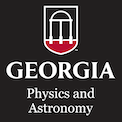For the past five years, a multi-university interdisciplinary team led by the University of Maryland's Physics Education Research Group has been rethinking the role that a physics class can play for biology majors and pre-meds. We found some surprising results. Some of the things we had been doing turned out to be of little value for this population; and we learned there were valuable things we could do for them that hadn't even occurred to us to try. I'll review some of our decisions and what we have learned. I'll spend the last few minutes of the talk speculating on some of the questions an approach like this raises for the physics curriculum for majors and engineers.
References:
Reinventing physics for life science majors
Toward better physics labs for future biologists
Chemical energy in an introductory physics course for the life sciences


